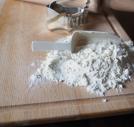The Case for Universal Testing of Blood Glucose Levels
The 2014 National Diabetes Statistics Report states that 8.1 million Americans with diabetes were undiagnosed as of 2012.
Also in 2012, 86 million Americans aged 20 and above had prediabetes.
Based on these findings, shouldn't everyone test his or her blood glucose levels?
Diabetes is the seventh leading cause of death in the United States. Although the rate of increase declined slightly between 2010 and 2012, there are still 1.7 million new cases each year.
Knowledge Is Power
An argument could be made that the information about diabetes prevention currently being disseminated has had a positive impact, with a lower rate of new cases. With more awareness, people are making better choices about what they eat and how much exercise they get. New laws against processed food additives, such as trans fats, have also reduced the dangers of consuming harmful food products.
So if knowledge is indeed power, wouldn't knowledge of one's own blood sugar level be a very powerful tool in preventing diabetes?
Blood Sugar Goals
There are separate blood sugar goals for non-diabetics, pre-diabetics and diabetics. (The goals for diabetics might actually be a little bit different from patient to patient, depending upon other medical issues, medications and age.)
Non-diabetics should be able to wake up in the morning and have a blood glucose reading before breakfast that is less than 100. Before lunch, supper or a snack, blood sugar should test out at less than 110. Bedtime readings should be less than 120 and post-prandial readings (two hours after meals) should be less than 140. A1c should be less than 6 percent.
Readings for diabetics should be between 70 and 130 before breakfast, before lunch, before supper and before snacks. Two hours after meals, blood glucose levels should test at less than 180. Bedtime should test between 90 and 150. A1c should be less than 7 percent.
What's a Non-Diabetic to Do?
Jane Doe, 54, was given the opportunity at the train station to check her blood glucose on her way to work one morning. She had not eaten anything on her way out the door, had not even had her morning cup of coffee from her favorite coffee shop yet.
Her blood glucose reading was 95. That's a decent reading for a non-diabetic but getting pretty close to a diagnosis of pre-diabetes. What actions should she take? Is it too late to change her path to diabetes?
The pamphlet Jane was given suggested she make some changes. Jane is surprised and concerned about how close she is to a diagnosis of pre-diabetes, so she substituted the bagel with cream cheese she was going to have for breakfast for a bran muffin and some fruit. She chose to have a plain coffee with skim milk instead of the large double mocha macchiato with whipped cream she usually orders. Finally, she took the stairs to her third floor office instead of the elevator.
Jane has a real chance to make a difference and avoid the diagnosis of diabetes in her future. She might not have known that, however, if she hadn’t tested her blood glucose.
Source: Joslin Diabetes Center


































